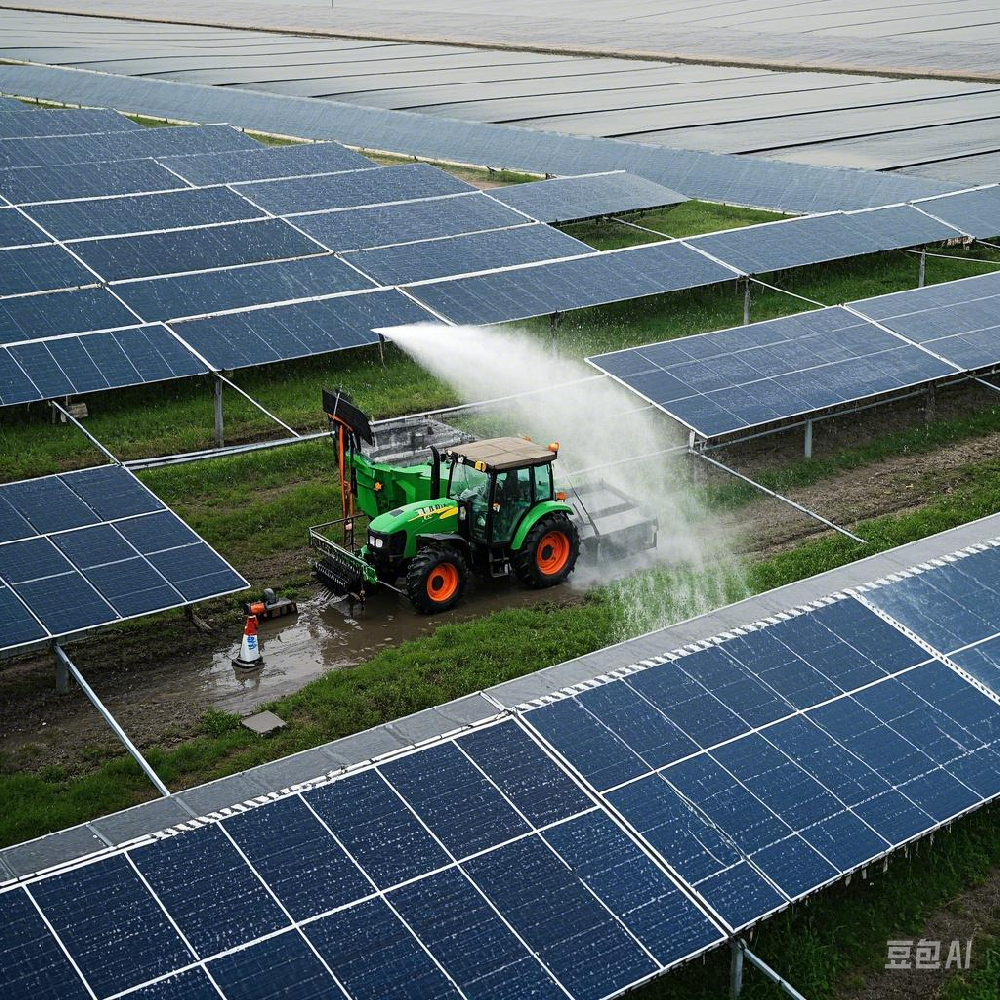
In the field of photovoltaic power generation, the efficiency and effectiveness of photovoltaic cleaning machines play a crucial role in maintaining the performance of solar panels. Several key components are essential in the operation of these machines, namely hydraulic proportional valves, electro-hydraulic proportional control, electronically controlled handles, hydraulic motors, and hydraulic cylinders.
Hydraulic Proportional Valves
Hydraulic proportional valves are vital in photovoltaic cleaning machines. These valves can precisely control the flow rate and pressure of hydraulic fluid. By adjusting the opening degree of the valve according to specific signals, they ensure that the hydraulic system provides the appropriate power and movement speed. For example, in the lifting and lowering mechanism of the cleaning brush, the hydraulic proportional valve accurately regulates the flow of hydraulic oil to the hydraulic cylinder, enabling the brush to move smoothly and adjust its position precisely. This precise control not only improves the cleaning quality but also helps protect the solar panels from potential damage caused by excessive force.
Here we recommend the PV-4 series of YOULI brand with a good cost ratio valve, which can be a perfect alternative to Danfoss, Brevini, Walvoil, HAWE
Electro-Hydraulic Proportional Control
Electro-hydraulic proportional control combines the advantages of electrical and hydraulic systems. It allows for more accurate and flexible control of the hydraulic components in photovoltaic cleaning machines. Through electronic signals, the system can precisely adjust the parameters of the hydraulic proportional valves. This technology enables the machine to adapt to different cleaning requirements and working conditions. For instance, when dealing with panels of different sizes or levels of dirt, the electro-hydraulic proportional control system can adjust the speed and pressure of the cleaning process in real-time. It also facilitates the integration of the cleaning machine with other automated control systems, enhancing the overall intelligence and operability of the photovoltaic power generation facility.
Electronically Controlled Handles
The electronically controlled handles in photovoltaic cleaning machines provide operators with an intuitive and convenient control interface. These handles are connected to the control system and can send various commands based on the operator's actions. For example, by rotating or pressing the handle, the operator can control the movement direction and speed of the cleaning machine. The signals from the electronically controlled handles are transmitted to the electro-hydraulic proportional control system, which then adjusts the hydraulic motors and cylinders accordingly. This human-machine interaction design improves the operational efficiency and safety of the cleaning machine. Operators can easily control the machine to perform complex cleaning tasks, such as moving along the rows of solar panels and adjusting the angle of the cleaning brush.
Hydraulic Motors
Hydraulic motors are responsible for converting hydraulic energy into mechanical rotational energy in photovoltaic cleaning machines. They drive the rotation of the cleaning brushes or the movement of other components. The torque and speed of the hydraulic motors can be adjusted by the hydraulic proportional valves and electro-hydraulic proportional control system. This allows the cleaning machine to adapt to different surface conditions of the solar panels. For example, when encountering stubborn dirt or uneven panel surfaces, the hydraulic motor can increase its torque to ensure effective cleaning. Moreover, the reliable operation of hydraulic motors is crucial for the continuous and stable performance of the cleaning machine, reducing downtime and maintenance costs.
Hydraulic Cylinders
Hydraulic cylinders are used to provide linear motion in photovoltaic cleaning machines. They are commonly employed in mechanisms such as lifting and tilting the cleaning equipment. The extension and retraction of the hydraulic cylinders are precisely controlled by the hydraulic proportional valves and electro-hydraulic proportional control. This enables the cleaning machine to adjust the height and angle of the cleaning brush accurately. For example, when cleaning panels at different heights or slopes, the hydraulic cylinders can adjust the position of the brush to ensure optimal contact and cleaning effect. The durability and stability of hydraulic cylinders are essential for the long-term operation of the cleaning machine, as they withstand significant forces and repetitive movements.
In conclusion, the combination of hydraulic proportional valves, electro-hydraulic proportional control, electronically controlled handles, hydraulic motors, and hydraulic cylinders in photovoltaic cleaning machines enables efficient, precise, and reliable operation. These components work together to maintain the cleanliness of solar panels, thereby maximizing the power generation efficiency of photovoltaic power plants. As the photovoltaic industry continues to grow, the continuous improvement and innovation of these key components will further enhance the performance and competitiveness of photovoltaic cleaning machines.